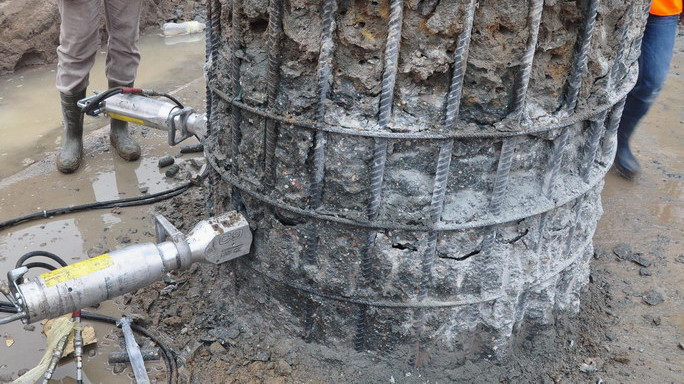Hydraulic wedges
When are hydraulic wedges used?
Darda hydraulic wedges are used for impact-free and detonation-free tearing of construction materials. With their help, it is possible to break concrete or walls in a controlled manner. The advantage is reduced noise and dust compared to the use of explosives or impact devices.
Darda wedges are driven by hydraulic power units equipped with combustion, electric and pneumatic motors. The equipment is powered by 110 V, which provides relatively high splitting power compared to its size. Five actuators can be connected to Darda hydraulic stations simultaneously.
The effective breaking force of concrete using Darda wedges is 200 tons for the C9 model and up to 413 tons for the C12 model.
How to use hydraulic wedges
The first step is to drill openings. Then hydraulic expansion wedges are placed in them. Once they expand, the concrete is subjected to a tensile load, allowing it to crumble. The work is relatively quiet, with low dust emissions, and allows for high precision.
Advantages of using hydraulic wedges:
- work safety - no debris and dust
- cost-effective to use - only one operator is needed, and up to 5 crushing actuators can be connected to the unit independently of each other
- work precision - ability to determine the direction of breaking, controlled use of high power
- low nuisance of work - no vibration, shock waves, low noise level
- wide application - splits various types of materials: concrete (including reinforced), rocks, stone; possible work in hard-to-reach places, including under water
- rapid work - formidable power compared to its dimensions - the force of the smallest device is 200 tons

